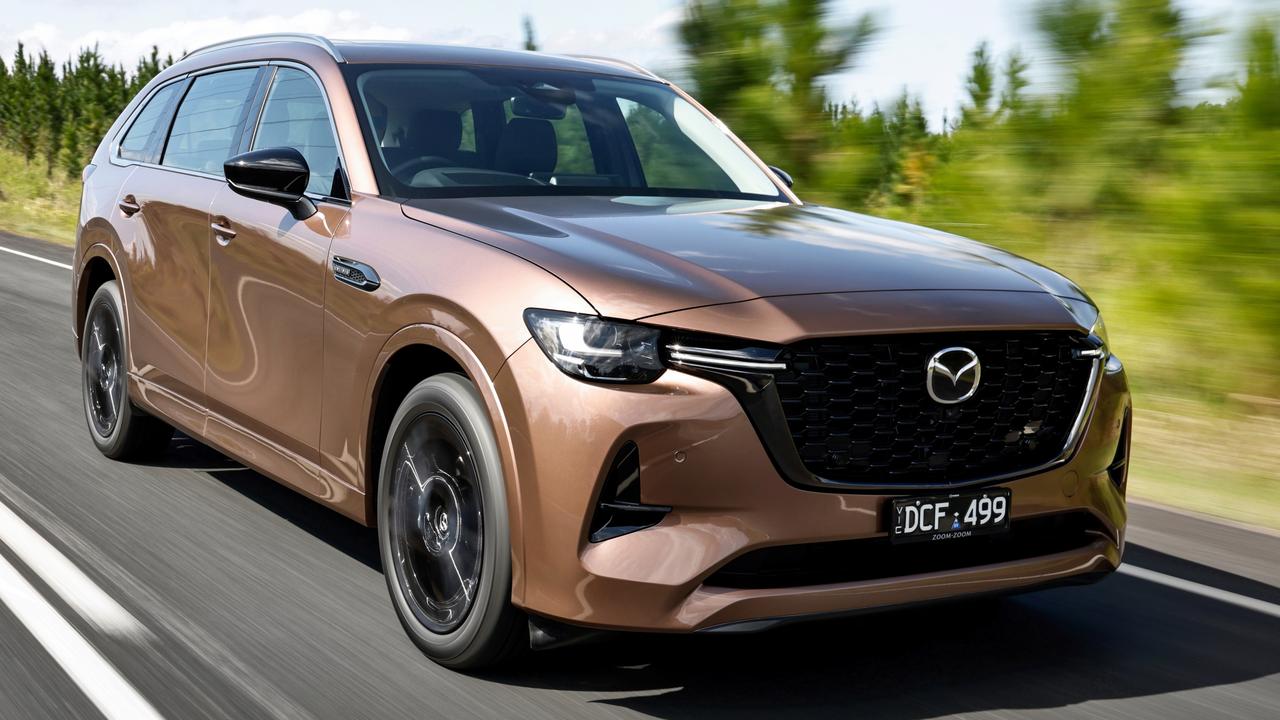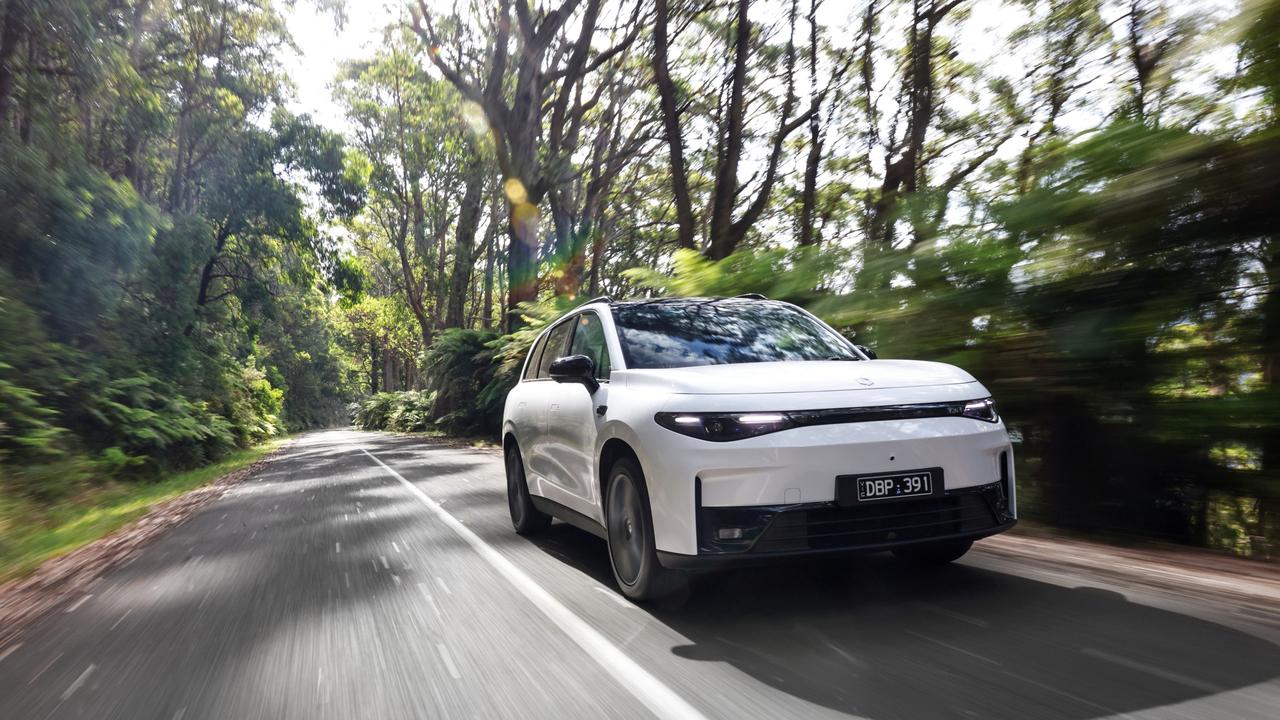2021 Hyundai i30N review: Hot hatch just got better
There are very few cars that can match it with this spicy hatchback, and none offer more bang for your buck.
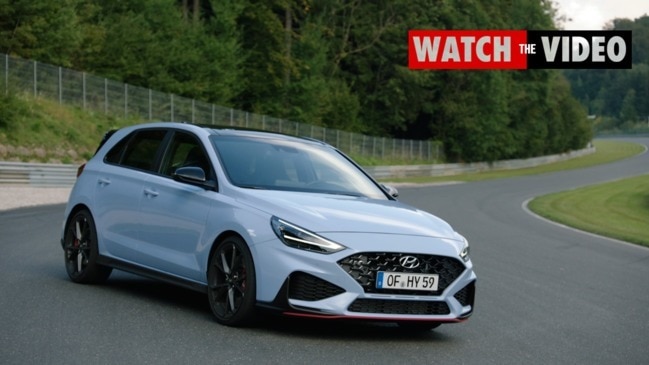
New Cars
Don't miss out on the headlines from New Cars. Followed categories will be added to My News.
It’s the nature of performance cars, and the engineers who create them, that they are a work in progress rather than a finished product. There’s always an opportunity for a tweak here, and a fiddle there, to make the machine faster, lighter, stronger. Better.
Hyundai’s i30N hot hatch, our 2018 Car of the Year, has just had its second update. Whereas many pointy-end performance drives evolve into pseudo luxury compromises – Exhibit A being the Porsche 911 – Hyundai has further sharpened the i30N’s claws and increased its capabilities as a track day weapon.
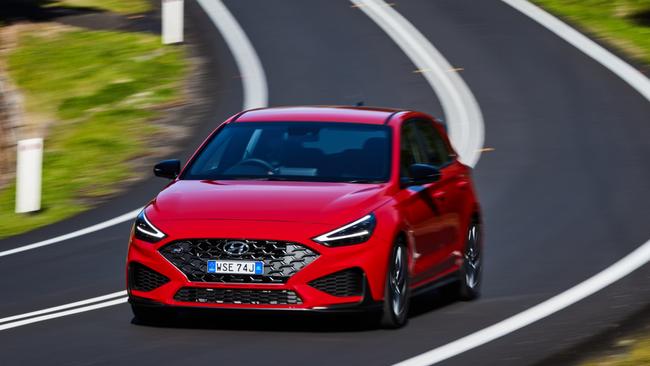
However the 2021 update also introduces features that broaden the i30N’s daily driver appeal as well.
Chief among them is an eight-speed twin clutch automatic transmission option. Luddites bleat that real drivers dance on three pedals, but the fact is they’ll be slower and clumsier than the person flicking the i30N’s shift paddles, or the software that decides when to change gears.
As well as Normal and Sport shift maps, the eight-speed has N Grin Shift mode, which accesses maximum engine power for 20 seconds, Power Shift, which keeps the engine revs pinned between changes, and Track Sense Shift – code for flat out mode.
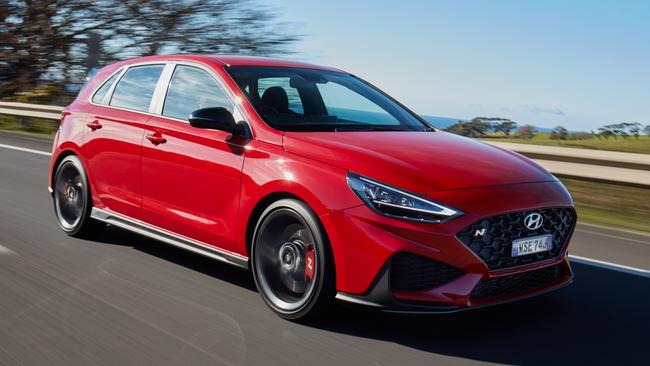
In Normal mode around town it’s almost as civilised as a conventional automatic, with minimal delay engaging from rest and acceptably smooth shifts. In the go hard settings, it’s crisp, lightning fast and remarkably insightful when responding to your right foot.
The eight-speed doesn’t compromise the performance credentials of the i30N at all. It enhances them.
A six-speed manual is still offered in the base model hatch, priced at $44,500 plus on-road costs. The eight-speed DCT adds $3000.
Premium, with the manual only, is $47,500; Premium with a sunroof is $49,000, or $52,000 with DCT. A Limited Edition (500 units) Fastback N is also $49,000/$52,000.
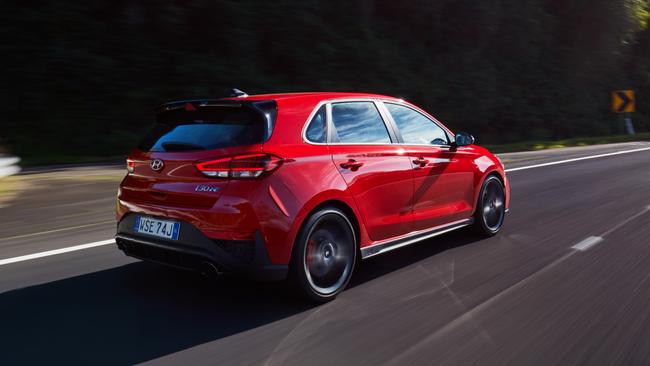
A price increase of $3100 on the base i30N manual hatch buys more performance, a sharper chassis, upgraded cabin and extra safety tech, including blind spot monitoring, lane keep assist and rear cross traffic alert.
The 2.0-litre turbo now produces 206kW of power and 392Nm of torque, increases of 4kW and 39Nm, in large part thanks to a bigger turbo. It has lost a little bottom end grunt, with peak torque now kicking in at 2100rpm rather than the previous model’s 1400rpm, but the delivery remains broad and very strong, with serious top end kick from about 4500rpm or so. Peak power is at 6000rpm, as before.
The manual now reaches 100km/h in 5.9 seconds – 0.2 seconds quicker than previously. The DCT variant takes just 5.4 seconds.
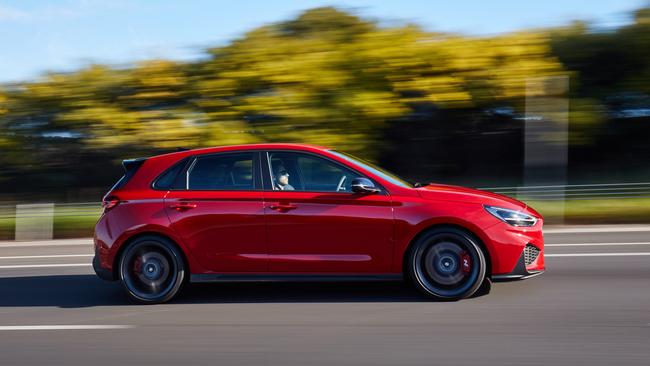
VW’s Golf GTI, with a 180kW/370Nm 2.0-litre turbo/seven-speed DCT takes 6.3 seconds. It costs $53,100.
More torque also means more torque steer in the i30N, though, and that characteristic tugging at the wheel under hard acceleration, evident in any front wheel drive hot hatch, is quite pronounced. You have to fight it occasionally, especially when the car threatens to change lanes.
Hyundai has taken about 60kg out of the i30N manual with features such as new forged alloy 19-inch wheels and lighter front seats.
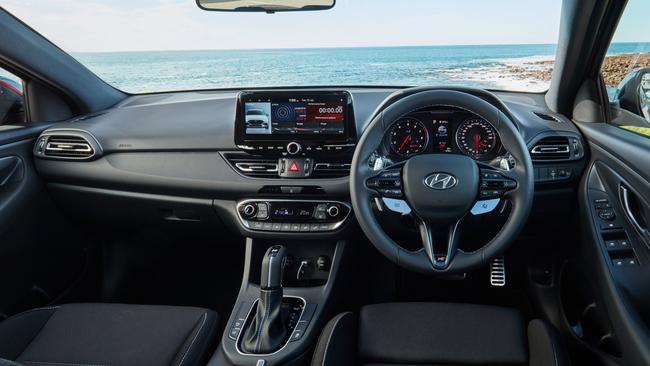
A local suspension tune includes stiffer springs and re-valved dampers (still adjustable), while extensive suspension geometry changes include increased negative camber for improved front end grip, agility and controllability at track pace.
These changes extend the i30N’s capability at the fast and furious end of things, but they also make it less comfortable and forgiving as an everyday drive.
On rough roads the ride can be a punish, even in Normal mode, to the extent that you’re incessantly jostled in your seat and struggling to jab the correct icon on the new 10.25 inch infotainment touchscreen. The new driver’s seat is underpadded and hard on the backside, too. Add lots of tyre noise from the Pirelli PZeros and the i30N becomes a less than desirable long distance drive.
Still, that’s not the brief here. If you want comfort with your performance, buy the Golf GTI. I drove it back to back with the Hyundai, on the same roads, and although both cars ostensibly compete in the same class, they could not be more different in character.
The Golf is a brilliant compromise between performance and luxury. The Hyundai is simply brilliant, uncompromised, performance.
VERDICT 4/5
The best hot hatch just got even hotter.
HYUNDAI i30N VITALS
Price: From about $49,000 drive-away
Engine: 2.0-litre four cylinder turbo petrol, 206kW/392Nm
Warranty/servicing: 5-year/unlimited km, $1595 prepaid for 5 years/50,000km
Safety: Not yet ANCAP tested, 7 airbags, AEB, blind spot monitoring, lane keep assist, rear cross traffic alert
Fuel: 8.5L/100km
Cargo: 381L
Spare: Space saver
Originally published as 2021 Hyundai i30N review: Hot hatch just got better



